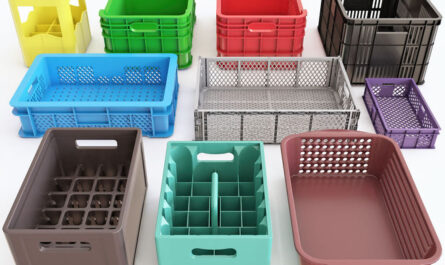The pallets market in India has witnessed significant growth over the past few years and is emerging as one of the fast-growing logistics packaging markets. Various factors such as rapid growth in e-commerce, expansion of retail and food processing industries, push for modernization of warehousing and logistics infrastructure are fueling demand for pallets in the country.
Rise of e-commerce boom
The e-commerce sector in India has grown exponentially over the past few years supported by rising internet and smartphone penetration. Various e-tailers have established nationwide supply chain and logistics networks for efficient transportation and storage of goods. This has generated huge demand for Pallets from the e-commerce players.
Pallets allow for safe, secure and efficient movement of packages within warehouses and transportation between distribution centers. They ensure protection of goods from damage and help in optimal utilization of transport and storage space. This makes pallets an essential component of e-commerce logistics. It is estimated that e-commerce sector currently accounts for over 25% of total pallet demand in India.
Growth of retail sector
India is one of the world’s fastest growing retail markets. Liberalization of FDI policies has attracted major retail giants to enter the untapped Indian market. Organized retail is expanding into tier 2 and tier 3 cities supported by emergence of modern retail formats such as supermarkets and hypermarkets. Cold storage and warehousing infrastructure is also being set up pan India to support retail and food industries.
Pallets serve as basic unit loads for storage and transfer of goods within retail distribution centers and warehouses. They facilitate efficient movement of inventories and optimization of available space. Grocery, FMCG and packaged food industries extensively use wooden, plastic and corrugated pallets for logistics operations. It is projected that retail sector would contribute over 30-35% of the future pallet demand in the country.
Modernization of logistics
The logistics industry in India is undergoing a phase of modernization supported by various government initiatives. Major developments such as the land and coastline connectivity projects, expansion of national highways and railway infrastructure are streamlining movement of goods across the country.
There is a growing emphasis on mechanization and automation of warehousing activities. Use of conveyor belts, lift trucks, automated sortation and palletizers is rising. This has increased dependency on standardized pallet sizes for effective movement of unit loads through automated logistics systems. It is estimated that modernized warehousing and third party logistics providers account for around 20-25% of current pallet consumption.
Plastic pallets gain popularity
While wooden pallets have been the traditional form of pallet used for decades in India, plastic pallets are fast emerging as a popular alternative. Their benefits such as lighter weight, durability, resistance to insects and termite attacks, easy sterilization and reuse is driving uptake. Plastic pallets are gaining acceptance across industries such as food processing, chemicals and pharmaceuticals where requirements of safety, hygiene and damage-free transport are high.
Rising environmental awareness is another key factor favoring plastic over wooden pallets. Plastic pallets generate 75% less carbon footprint over the product lifecycle as compared to wooden pallets. They also reduce dependency on timber and prevent deforestation. Major pallet rental and pool operators are transitioning their fleets towards more sustainable plastic models to meet ESG directives of global clients. This is expected provide boost to plastic pallet consumption over the coming years.
Pallet pooling gathers momentum
Pallet pooling and rental models are gaining popularity among industries and logistic customers in India. Instead of one-time use and disposal of pallets, these models offer advantages such as optimization of inventory, reduction in procurement and disposal costs. Companies can focus on their core businesses rather than managing inefficient pallet transactions.
Major national and multi-national pallet pool operators have established networks across major industrial clusters and ports. This provides an efficient pallet supply infrastructure to a wide customer base. Industries are actively partnering with pallet pools to outsource pallet management activities. It is estimated that pallet pooling currently drives over 15-20% of total market demand. This share is expected to increase as more corporates adopt pallet rental models for logistics requirements.
Standardization and regulations
Lack of uniform pallet sizes and grades has been a longstanding issue impacting pallet circulation in India. However, in recent years the Bureau of Indian Standards has introduced several protocols for wood, plastic, FIBC and CHEP pallets specifying dimensions and testing methods. Growing industrialization and trade is propelling the need for adopting standardized pallet sizes.
The government has also implemented regulations mandating proper treatment and certification of wooden packaging material imports. This is aimed at eliminating quarantine problems and reduction of pests affecting logistics efficiency. Standardization and regulated pallet quality practices will play a key role in further organization and development of the pallet market.




